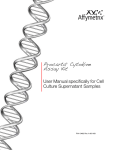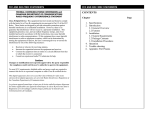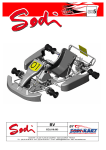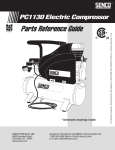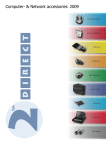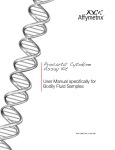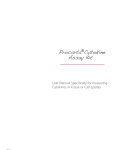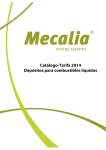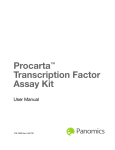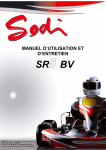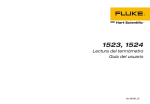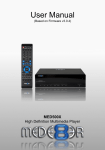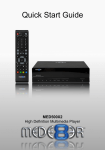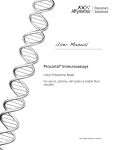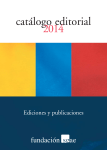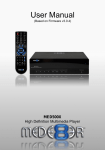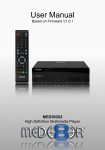Download Procarta® Cytokine Assay Kit User Manual specifically
Transcript
Procarta® Cytokine Assay Kit User Manual specifically for Serum and Plasma Samples P/N 10483 Rev. D 042509 DRAFT May 7, 2009 11:31 am ProcartaCytokineTtile-Low_RES.fm Affymetrix, Inc. Procarta Cytokine Assay Kit User Manual Copyright © Copyright 2009, Affymetrix, Inc. All rights reserved. Trademarks Procarta is a registered trademark of Affymetrix, Inc. xMAP and Luminex are registered trademarks of the Luminex Corporation. Bio-Plex is a registered trademark of Bio-Rad Laboratories. Citing Procarta in Publications When describing a procedure for publication using this product, we would appreciate it if you would refer to it as the Procarta® Cytokine Assay Kit. If a paper cites a Procarta product and is published in a research journal, the lead author(s) may receive a travel stipend for use at a technology conference or tradeshow by sending a copy of the paper to our technical support group at [email protected] or via fax at (510) 818-2610. Disclaimer Affymetrix, Inc. reserves the right to change its products and services at any time to incorporate technological developments. This manual is subject to change without notice. Although this manual has been prepared with every precaution to ensure accuracy, Affymetrix, Inc. assumes no liability for any errors or omissions, nor for any damages resulting from the application or use of this information. DRAFT May 7, 2009 11:31 am ProcartaCytokineTtile-Low_RES.fm Contents About the User Manual . . . . . . . . . . . . . . . . . . . . . . . . . . . . . . . . . . . . . . . . . . . . . . . . . 5 Who Should Read this Manual. . . . . . . . . . . . . . . . . . . . . . . . . . . . . . . . . . . . . . . 5 What this Manual Covers . . . . . . . . . . . . . . . . . . . . . . . . . . . . . . . . . . . . . . . . . . . 5 Safety Warnings and Precautions . . . . . . . . . . . . . . . . . . . . . . . . . . . . . . . . . . . . 5 Contacting Affymetrix . . . . . . . . . . . . . . . . . . . . . . . . . . . . . . . . . . . . . . . . . . . . . . 5 About the Procarta Cytokine Assay Kit . . . . . . . . . . . . . . . . . . . . . . . . . . . . . . . . . . . . . 6 Procarta Cytokine Assay Defined. . . . . . . . . . . . . . . . . . . . . . . . . . . . . . . . . . . . . 6 Available Kit Formats . . . . . . . . . . . . . . . . . . . . . . . . . . . . . . . . . . . . . . . . . . . . . . 6 Procarta Cytokine Assay Kit Contents and Handling Conditions . . . . . . . . . . . . . . . . . . 6 Kit Contents and Storage . . . . . . . . . . . . . . . . . . . . . . . . . . . . . . . . . . . . . . . . . . . 6 Kit Handling . . . . . . . . . . . . . . . . . . . . . . . . . . . . . . . . . . . . . . . . . . . . . . . . . . . . . 6 Required Materials and Equipment Not Provided . . . . . . . . . . . . . . . . . . . . . . . . . . . . . 7 Equipment . . . . . . . . . . . . . . . . . . . . . . . . . . . . . . . . . . . . . . . . . . . . . . . . . . . . . . 7 Sample Type Specific Materials . . . . . . . . . . . . . . . . . . . . . . . . . . . . . . . . . . . . . . 7 Overview of Assay Workflow . . . . . . . . . . . . . . . . . . . . . . . . . . . . . . . . . . . . . . . . . . . . . 8 Getting Started . . . . . . . . . . . . . . . . . . . . . . . . . . . . . . . . . . . . . . . . . . . . . . . . . . . . . . . . 9 Setting Up and Calibrating the Manifold. . . . . . . . . . . . . . . . . . . . . . . . . . . . . . . . 9 Operating the Manifold . . . . . . . . . . . . . . . . . . . . . . . . . . . . . . . . . . . . . . . . . . . . 10 Sample Preparation . . . . . . . . . . . . . . . . . . . . . . . . . . . . . . . . . . . . . . . . . . . . . . . . . . . 10 Preparing Samples. . . . . . . . . . . . . . . . . . . . . . . . . . . . . . . . . . . . . . . . . . . . . . . 10 Plasma Samples . . . . . . . . . . . . . . . . . . . . . . . . . . . . . . . . . . . . . . . . . . . . . . . . .11 Serum Samples . . . . . . . . . . . . . . . . . . . . . . . . . . . . . . . . . . . . . . . . . . . . . . . . . .11 Dilution for High Expression Cytokines . . . . . . . . . . . . . . . . . . . . . . . . . . . . . . . .11 Special Sample Preparation for TGF beta and Ghrelin . . . . . . . . . . . . . . . . . . . .11 Standard Preparation . . . . . . . . . . . . . . . . . . . . . . . . . . . . . . . . . . . . . . . . . . . . . . . . . . 12 Performing the Assay. . . . . . . . . . . . . . . . . . . . . . . . . . . . . . . . . . . . . . . . . . . . . . . . . . 13 Troubleshooting . . . . . . . . . . . . . . . . . . . . . . . . . . . . . . . . . . . . . . . . . . . . . . . . . . . . . . 16 Possible Problems and Recommended Solutions . . . . . . . . . . . . . . . . . . . . . . . 16 Appendix . . . . . . . . . . . . . . . . . . . . . . . . . . . . . . . . . . . . . . . . . . . . . . . . . . . . . . . . . . . 18 Limit of Detection . . . . . . . . . . . . . . . . . . . . . . . . . . . . . . . . . . . . . . . . . . . . . . . . 18 Limit of Quantitation . . . . . . . . . . . . . . . . . . . . . . . . . . . . . . . . . . . . . . . . . . . . . . 18 Accuracy/ Recovery . . . . . . . . . . . . . . . . . . . . . . . . . . . . . . . . . . . . . . . . . . . . . . 18 Precision . . . . . . . . . . . . . . . . . . . . . . . . . . . . . . . . . . . . . . . . . . . . . . . . . . . . . . 18 Specificity . . . . . . . . . . . . . . . . . . . . . . . . . . . . . . . . . . . . . . . . . . . . . . . . . . . . . . 19 Sample and Blank Plate Layouts . . . . . . . . . . . . . . . . . . . . . . . . . . . . . . . . . . . . 19 Procarta Cytokine Assay User Manual iii About the User Manual About the User Manual Who Should Read Anyone that has purchased a Procarta® Cytokine Assay Kit from Affymetrix to this Manual perform quantitative, multiplexed cytokine measurements from Serum or Plasma samples using the Luminex® Technology. IMPORTANT Please note that we provide additional application specific manuals for the Procarta assays for the following sample types: ♦ Cell Culture Supernatants ♦ Tissue or Cell Lysates ♦ Bodily Fluids Our most updated manuals can be obtained from our website at www.panomics.com What this Manual This manual provides recommendations and step-by-step procedures for the Covers following: ♦ Sample Procedure ♦ Standard Preparation ♦ Assay Procedure ♦ Troubleshooting Safety Warnings ! WARNING ! Though the general procedure is very similar to other and Precautions Luminex cytokine assays, there are subtle differences due to the approach we have taken in developing the assay to have an improved workflow. Please do not refer to other vendors’ manuals for performing the assay. Please read the supplied User Manual and Product Insert prior to starting the assay. CAUTION All chemicals should be considered potentially hazardous. We recommend that this product and its components be handled by those trained in laboratory techniques and be used according to the principles of good laboratory practice. CAUTION This kit contains small quantities of sodium azide. Sodium azide reacts with lead and copper plumbing to form explosive metal azides. When disposing, flush drains with a large volume of water to prevent azide accumulation. Observe all state and local regulations for disposal. Contacting For technical questions, please contact our technical support group by telephone at Affymetrix 1-877-726-6642 option 3, or email at [email protected] (US and Candada). In Europe, contact [email protected]. In Asia/Pacific, contact [email protected]. For an updated list of FAQs and product support literature, visit our website at www.panomics.com. Procarta Cytokine Assay User Manual Page 5 About the Procarta Cytokine Assay Kit About the Procarta Cytokine Assay Kit Procarta Cytokine The Procarta Cytokine assays are multiplex immunoassays based on xMAP® Assay Defined detection technology developed by Luminex. This bead based multiplex assay kit can quantitatively measure multiple cytokines from as little as 25 µL of serum or plasma in less than 4 hours with a limit of detection of 1 pg/ml/cytokine or less Available Kit Procarta Cytokine Assay Kits are available as: Formats ♦ Standard pre-mixed panels ♦ “By Request” user configurable panels Procarta Cytokine Assay Kits are available as single or ten plate 96-well formats and contain all the reagents required to detect cytokines. Procarta Cytokine Assay Kit Contents and Handling Conditions Kit Contents and The Procarta Cytokine Assay Kit contains the following components. The kits are Storage available as single plate or ten plate formats. Refer to the product insert for quantities and details of components supplied. Procarta Cytokine Kit components: Component Kit Handling ♦ Page 6 Storage Reading Buffer 4°C 10X Wash Buffer 4°C Detection Antibody, premixed 4°C Antigen Standards, premixed, lyophilized 4°C Streptavidin-PE (SAPE) 4°C Antibody Beads 4°C Filter Plate 4°C Plate Seals 4°C PCR 8 Strip Tube 4°C Store the entire kit at 4°C ♦ Do not reuse or store resuspended antigen standards ♦ 10X Wash Buffer and its 1X dilution can be stored at 4°C or room temperature for up to 6 months Procarta Cytokine Assay User Manual Required Materials and Equipment Not Provided Required Materials and Equipment Not Provided Equipment Item Source Vacuum filtration system Millipore (P/N MAVM0960R and WP6111560) Microplate shaker Labline model 4625 or equivalent (must have 3 mm orbit with ability to maintain 500 rpm) Luminex or Luminex-based instrument MiraiBio, Bio-Rad or other Luminex instrument provider Sample Type IMPORTANT Please ensure that you have ordered and have the appropriate species-specific Specific Materials Standard Buffer and Assay Buffer prior to starting your assay. Cat # Contents Size PC0050 Standard Buffer, Human Serum with Human Assay Buffer 2.5 mL / 9 mLs PC0052 Standard Buffer, Human Plasma with Human Assay Buffer 2.5 mL / 9 mLs PC0150 Standard Buffer, Mouse Serum with Mouse Assay Buffer 2.5 mL / 9 mLs PC0152 Standard Buffer, Mouse Plasma with Mouse Assay Buffer 2.5 mL / 9 mLs PC0250 Standard Buffer, Rat Serum with Rat Assay Buffer 2.5 mL / 9 mLs PC0252 Standard Buffer, Rat Plasma with Rat Assay Buffer 2.5 mL / 9 mLs PC0350 Standard Buffer, Non Human Primate Serum with NHP Assay Buffer 2.5 mL / 9 mLs PC0352 Standard Buffer, Non Human Primate Plasma with NHP Assay Buffer 2.5 mL / 9 mLs PC0450 Standard Buffer, Porcine Serum with Porcine Assay Buffer 2.5 mL / 9 mLs PC0452 Standard Buffer, Porcine Plasma with Porcine Assay Buffer 2.5 mL / 9 mLs PC0051 Standard Buffer, Human Serum with Human Assay Buffer 25 mL / 90 mLs PC0053 Standard Buffer, Human Plasma with Human Assay Buffer 25 mL / 90 mLs PC0151 Standard Buffer, Mouse Serum with Mouse Assay Buffer 25 mL /90 mLs PC0153 Standard Buffer, Mouse Plasma with Mouse Assay Buffer 25 mL / 90 mLs PC0251 Standard Buffer, Rat Serum with Rat Assay Buffer 25 mL / 90 mLs PC0253 Standard Buffer, Rat Plasma with Rat Assay Buffer 25 mL /90 mLs PC0351 Standard Buffer, Non Human Primate Serum with NHP Assay Buffer 25 mL /90 mLs PC0353 Standard Buffer, Non Human Primate Plasma with NHP Assay Buffer 25 mL / 90 mLs PC0451 Standard Buffer, Porcine Serum with Porcine Assay Buffer 25 mL / 90 mLs PC0453 Standard Buffer, Porcine Plasma with Porcine Assay Buffer 25 mL /90 mLs Procarta Cytokine Assay User Manual Page 7 Overview of Assay Workflow Overview of Assay Workflow Step 1. Prepare Samples and Reagents a. Collect and prepare samples b. Prepare antigen standards c. Prepare 1X Wash Buffer Step 2. Pre-wet Filter Plate a. Let sit for 5 min b. Filter Step 3. Add Antibody Beads a. Filter b. Wash once c. Filter Step 4. Add samples/standards a. Incubate 30 min shaking, 20-25 C b. Wash/filter three times Step 5. Add Detection Antibody a. Incubate 30 min shaking, 20-25 C b. Wash/filter three times Step 6. Add Streptavidin-PE a. Incubate 30 min shaking, 20-25 C b. Wash/filter three times Step 7. Page 8 Read plate Procarta Cytokine Assay User Manual Getting Started Getting Started ♦ Thoroughly read the Product Insert that is included with your kit. The product insert includes the bead regions and may contain special instructions for proper use of your “By Request” or custom panel. ♦ Turn on the Luminex machine and initiate the startup protocol. It takes 30 minutes for the laser to warm-up. ♦ Vortex the 10X Wash Buffer to dissolve all the salts. Mix 20 mL of the 10X Wash Buffer with 180 mL deionized, sterile water. 1X Wash Buffer can be stored at 4 °C or room temperature for up to 6 months. ♦ Ensure that the Millipore vacuum manifold has been properly setup and calibrated. ♦ Change the pipet tips after every transfer and avoid creating bubbles when pipetting. ♦ During the incubation steps, cover the Filter Plate with aluminum foil to prevent photobleaching of the fluorescent beads. ♦ Be careful not to invert the plate or allow contents from one well to mix to another well. ♦ We recommend using a mutlichannel pipette whenever possible to reduce CVs. ♦ Bring all buffers to room temperature before setting up the assay. Store the detection antibody, antibody beads, Streptavidin-PE, and reconstituted standards on ice during the assay. ♦ When sealing the Filter plate with a Plate Seal, gently press your finger over the Plate Seal. Too much pressure can cause force the fluid through the filter plate. To avoid Filter Plate leakages, do not seal Filter Plates using a rubber roller (or equivalent) as they apply significant pressure resulting in leakage. ♦ Seal all unused wells with an enclosed Plate Seal to ensure proper vacuum pressure. Setting Up and To set up and calibrate the manifold: Calibrating the Step Action Manifold 1 Set up the Filter Plate vacuum manifold as shown below. Follow the manufacturer’s manual for details. Procarta Cytokine Assay User Manual Page 9 Sample Preparation To set up and calibrate the manifold: (continued) Step 2 Action Calibrate the vacuum pressure using a used Filter Plate: a. Place the Filter Plate on top of the manifold. b. Turn on the vacuum. c. Press down on all 4 corners of the Filter Plate to form a tight seal. d. Adjust the pressure so that it takes 8-10 seconds to evacuate 200 μL of wash buffer from the wells. If the vacuum is too high, beads can get trapped or pulled through the filter. e. Turn off vacuum as soon as the solution filters through the wells and remove the plate from the manifold. Operating the To operate the manifold: Manifold Step Action 1 Check vacuum calibration periodically. As a general guideline, 200 μL of solution should take approximately 8-10 seconds to clear the well of a Filter Plate. 2 For all filtration steps, turn on the vacuum pump, place the Filter Plate onto the vacuum manifold and then filter the solution. Avoid splashing and cross-contamination of wells during all wash steps. IMPORTANT Do not allow the Filter Plates to air-dry following washes. Immediately add the next component after each filtration step. IMPORTANT We recommend performing all the wash steps next to the manifold to minimize the amount of time that the beads are exposed to air. 3 Break the vacuum immediately after each solution has been completely filtered from all wells (approximately 8-10 seconds). Note 4 Wells may filter at different rates. Following the last wash in each series, blot the bottom of the Filter Plate thoroughly with a paper towel to remove traces of 1X Wash Buffer. Avoid touching the bottom of the Filter Plate with your fingers or to the bench during manipulations. Immediately move to the next step to ensure that the beads are in the appropriate buffered solution. Sample Preparation Preparing Samples ♦ Page 10 For optimal recovery and sensitivity, it is important to properly and consistently prepare samples. ♦ Store all samples on ice after preparation and use immediately or aliquot and store at –80°C. Avoid more than 2 freeze/thaw cycles. ♦ If you are using frozen samples, thaw completely on ice and mix well prior to use. ♦ Serum and plasma samples can be very viscous depending upon how and when the sample was prepared and stored. Because of this, the sample may need to be further diluted to properly measure the cytokines. We recommend starting with a 1:4 dilution of the samples using 1X PBS. Procarta Cytokine Assay User Manual Sample Preparation Plasma Samples Samples may be collected in sodium citrate or EDTA tubes. We recommend sodium citrate tubes as they result in less cell clumping. Use care when using heparin as a anticoagulant since an excess of heparin will give falsely high values. Use no more than 10 IU of heparin per mL of blood collected. Step Action 1 Centrifuge samples at 1000 x g at 4°C for 10 minutes. 2 Collect the supernatant and transfer into a clean tube. 3 Repeat Step 2 if necessary. 4 Use immediately or store at –80°C Serum Samples Samples should be collected in appropriate tubes designed for serum collection. Step Action 1 Allow blood to clot for 20–30 minutes at 20–25°C. 2 Centrifuge at 1000 x g for 10 minutes at 20–25°C. 3 Collect the supernatant. Alternatively, use any standard serum separator tube following the manufacturer’s instructions. 4 If there is a high lipid content, centrifuge at 1000 x g for 10 minutes at 20–25°C. Collecte the supernatant and transfer to a clean tube. Use immediately or store at –80°C. Dilution for High Sample dilution is recommended for plasma or serum samples if you are running Expression targets such as Adiponectin, MMP9, VCAM, ICAM, CRP, PAI-1, SAA, and Rantes. Cytokines Some cytokines may have a high response after stimulation and may extend beyond the measurable range. You may need to further dilute your samples if the response is above the measurable limit. However, most samples can be used directly in the assay for all other available targets. For cytokines such as Adiponectin, MMP9, VCAM, ICAM, CRP, PAI-1, SAA, and Rantes, we recommend starting with a dilution factor of 1:10,000. When preparing dilutions of the sample, we recommend using 1X PBS. Once diluted, follow the Serum/Plasma Cytokine Protocol as instructed in this manual. The final dilution factor in the assay well will be 1:20,000. Special Sample Preparation for TGF beta and Ghrelin Assays such as TGF beta and Ghrelin have special protocols for sample preparation. The TGF beta assay can only detect the active form. The complexed form present in serum or plasma will need to be acid treated and then neutralized converting the complexed form to the active form. The assay should be processed as a single plex assay since the sample must be acid treated. In the case of Ghrelin, the active ghrelin molecule is extremely unstable in serum/plasma and should be rigorously protected during blood sample collection. Ideally all samples should be processed as quickly as possible and kept on ice to retard the breakdown of active Ghrelin. For maximum protection, we recommend addition of Pefabloc or AEBSF and acidification of all samples. Because of the acid treatment, we recommend running Ghrelin as a single plex assay. To access our most recent protocols, please visit our website at www.panomics.com. Procarta Cytokine Assay User Manual Page 11 Standard Preparation Standard Preparation Step Action 1 Prior to preparing the standards, please ensure that the Luminex machine has been turned on and calibrated. The laser will take 30 minutes to warm up. 2 Reconstitute the premixed standard in 250 μL of Standard Buffer based on the sample type described below. Sample type Use this buffer Serum Species-specific Standard Buffer for Serum Plasma Species-specific Standard Buffer for Plasma Please verify that the appropriate species specific standard buffer has been ordered as described in “Sample Type Specific Materials” on page 7. 3 Vortex gently for 10 seconds and incubate on ice for 25 minutes. Transfer the entire contents to the first tube of the PCR 8-Strip Tube provided and store Strip Tubes on ice. Use of any other tube other than the Strip Tube provided may result in poor standard recovery. 4 Prepare serial dilutions of the premixed standard as indicated below using the 8 Strip Tube provided: a. Add 75 μL of species/matrix-specific Standard Buffer to tubes 2-8. Follow the table below to create the dilutions. Use a P200 pipette to transfer and mix the 25 μL of standard from tube to tube. b. Store on ice until ready to use. When transferring the standards to the filter plate, we recommend using a multi-channel pipette. Page 12 Antigen Standard (μL) Final Analyte Concentration in the Assay Well (pg/mL) Concentration in the Strip Tube (pg/mL) — 250 20,000 40,000 2 75 25 from Tube 1 5000 10,000 3 75 25 from Tube 2 1250 2,500 4 75 25 from Tube 3 313 625 5 75 25 from Tube 4 78 156 6 75 25 from Tube 5 19.5 39 7 75 25 from Tube 6 4.9 9.77 8 75 25 from Tube 7 1.22 2.44 Blank Well 25 μL per well Standard Buffer 0 0 Strip Tube # Standard Buffer (μL) 1 Procarta Cytokine Assay User Manual Performing the Assay Performing the Assay To perform the assay: Step Action 1 A blank layout is provided in the Appendix for recording your plate layout. Columns 1 and 2 are typically used for duplicate standards. Mark the sample and blank wells you want to use. 2 Seal the un-used wells of the plate with a Plate Seal prior to starting the assay. 3 Pre-wet the Filter Plate: a. Add 150 μL of Reading Buffer to each unsealed well. b. Incubate 5 minutes at room temperature. c. Remove the Reading Buffer with vacuum filtration. Reading Buffer should clear wells within 8-10 seconds. If outside this range, see “Setting Up and Calibrating the Manifold” on page 9. IMPORTANT Do not invert the plate during the rest of this procedure. 4 Add the Antibody Beads: a. Vortex the premixed Antibody Beads for 30 seconds at room temperature. b. Add 50 μL of Antibody Beads to each well. c. Remove buffer with vacuum filtration. 5 Wash the Antibody Beads: a. Add 150 μL/well of 1X Wash Buffer and remove with vacuum filtration. b. Blot the bottom of the Filter Plate thoroughly with paper towels to remove residual buffer. 6 Add 25 μL/well of Assay Buffer for both Standard and Sample Wells. IMPORTANT ONLY USE Assay Buffer. DO NOT USE Serum Standard Buffer or Plasma Standard Buffer 7 Add 25 μL/well of standards and samples as marked on the plate layout sheet. For the blank samples, add 25 μL/well of the appropriate Serum Standard Buffer or Plasma Standard Buffer. Seal the plate gently using the Plate Seal. 8 Incubate and wash the Filter Plate: a. Completely wrap the Filter Plate with aluminum foil and shake at 500 rpm for 60 minutes at room temperature. Optionally, if you decide to incubate overnight, you can shake the plate at room temperature for 30 minutes, transfer the plate to 4°C and store on a level surface. After overnight incubation, remove the plate from 4°C and shake for 30 min at room temperature prior to proceeding to the next step. b. Carefully remove the Plate Seal to avoid splashing the plate contents. c. Remove solution with vacuum filtration. d. When washing the plate, we recommend using multi-channel pipette and a large plastic reservoir for the wash buffer. We also recommend stationing the wash buffer reservoir next to the manifold to minimize the amount of time that the beads are exposed to air. e. Wash the plate three times with 150 μL/well of 1X Wash Buffer. After the 3rd wash, thoroughly blot the bottom of the Filter Plate with paper towels. 9 Add premixed Detection Antibodies: a. Add 25 μL/well of the Detection Antibody. b. Seal the Filter Plate with a new Plate Seal. c. Wrap the Filter plate with aluminum foil and shake at 500 rpm for 30 minutes at room temperature. Procarta Cytokine Assay User Manual Page 13 Performing the Assay To perform the assay: (continued) Step 10 Action Remove the solution with vacuum filtration and wash the plate: a. Carefully remove the Plate Seal to avoid splashing the plate contents. b. Remove solution with vacuum filtration. c. Wash the plate three times with 150 μL/well of 1X Wash Buffer. After the 3rd wash, thouroughly blot the bottom of the Filter Plate with paper towels. 11 Add Streptavidin–PE: a. Vortex the Streptavidin–PE. b. Add 50 μL/well of Streptavidin-PE. c. Seal the Filter Plate with a new Plate Seal. d. Completely wrap the Filter Plate with aluminum foil. e. Shake at 500 rpm for 30 minutes at room temperature. 12 Remove the solution with vacuum filtration and wash the plate: a. Carefully remove the Plate Seal to avoid splashing the plate contents. b. Remove solution with vacuum filtration. c. Wash the plate three times with 150 μL/well of 1X Wash Buffer. After the 3rd wash, thoroughly blot the bottom of the Filter Plate with paper towels. 13 Prepare plate for analysis on a Luminex instrument: a. Add 120 μL/well of the Reading Buffer. b. Seal the Filter Plate with a new Plate Seal. c. Shake at 500 rpm for 5 minutes at room temperature or until the Luminex instrument is available. d. Remove the Plate Seal before analyzing on the Luminex instrument. Note The Filter Plate can be wrapped with aluminum foil and stored for up to 48 hours before proceeding. After storage, remove the Reading Buffer using vacuum filtration and add 120 μL/well of Reading Buffer. Shake at 500 rpm for 5 minutes at room temperature prior to reading. Delay in reading the plate may result in decreased sensitivity for some analytes. 14 Please refer to your product insert when entering the bead analyte associations into your designated Luminex acquisition software (Bio-Plex, MasterPlex, xPonent). 15 Please refer to the previous section, “Standard Preparation” step 4, when calculating the concentration of the samples. The concentration of the samples can be calculated in one of two ways: If the “Final Analyte Concentration in the Assay Well” values are used for standard curves, then a 2 fold dilution must be applied to the samples. In this case, use the column starting at 20,000 pg/ml and ending at 1.22 pg/ml. If the “Concentration in the Strip Tube” values are used for standard curves, then no dilution factor is needed. In this case, use the column starting at 40,000 pg/ml and ending at 2.44 pg/ml. Page 14 Procarta Cytokine Assay User Manual Performing the Assay To perform the assay: (continued) Step 16 Action Analyze the plate following the respective operation manual for the Luminex or Luminex-based instrument. Software Sample Size DD Gate Timeout Bead Events/Be ad Region Luminex 100/ 50 μL 7,500-15,000 25 sec 50 or 100 50 μL 4335-10,000 45 sec 50 or 100 50 μL 2,000-15,000 25 sec 50 or 100 50 μL 4,335-10,000 25 sec 50 or 100 IS100 v 2.318 Bioplex/ Bio-Rad Miraibio/ Hitachi Starstation/ ACS 17 When the Luminex beads are injected into the flow cell, a small percentage of the beads will have a tendency to clump and go through the flow cell as doublets. The DD Gate or Doublet Discriminator Gate will allow for discrimination of the doublets from the singlet beads. When setting the DD Gate, you can follow the appropriate settings from the table above. However, for the best results, you should adjust the DD Gate and center the gates around the largest peak which is the singlet beads. You can adjust the gates when processing the first sample. The Bio-Plex® Suspension Array System allows calibration using Low or High sensitivity settings. Perform the sensitivity selection during calibration, using predetermined values of CAL2 RP1 target, as provided by Bio-Rad. Using the RP1 Low target value will provide results comparable to those obtained from the Luminex 100. Using the RP1 High target value may increase detection sensitivity for low cytokine protein concentrations but sacrifices part of the linear dynamic range for high concentrations. We recommend RP1 Low target value for BioPlex. The number of events per region can be 50 or 100. Please note that reading 100 events will take longer to read the entire plate. IMPORTANT Check to ensure the probe height in the Luminex instrument is adjusted appropriately for the Filter Plate. IMPORTANT We recommend that you calibrate the Luminex or Luminex-based instrument each day the assay is run. IMPORTANT If there is a malfunction of the instrument or software during the run, the plate can be re-processed on the Luminex machine. Remove the plate from the instrument and remove the Reading Buffer by vacuum filtration. Resuspend the beads in 120 μL of Reading Buffer and shake at 500 rpm for 5 minutes at room temperature. The plate may take longer to read since there will be less beads in the plate. Procarta Cytokine Assay User Manual Page 15 Troubleshooting Troubleshooting Possible Problems and Recommended Solutions Observation Possible Cause Recommended Action Filter plate Leakage or Vacuum pressure too high Adjust the vacuum pressure as recommended in “Setting Up and Calibrating the Manifold” on page 9. Filter Plate misaligned (at an angle) during incubation or processing steps Set the Filter Plate on a flat, level surface during incubation/processing. Leakage from capillary action After each vacuum step, thoroughly blot the bottom of the Filter Plate using paper towels or absorbent paper. Too much force applied to the Plate Seal Apply a Plate Seal onto the plate and gently press using your index finger. Filter plate is clogged Samples clogging the filter plate Further dilute the samples prior to adding to the plate. High CVs Samples and antigen standards not stored on ice Prepare the samples and standards on ice before setting up the assay. Bottom of the Filter Plate is not dry After each vacuum step, thoroughly blot the bottom of the Filter Plate using paper towels or absorbent paper. Contamination from re-using the Plate Seal Use a new Plate Seal for each incubation step. Incomplete washing After adding the standards and samples, it is very important that any excess standards are removed during the wash step. Contamination from Wash Buffer Be careful not to splash Wash Buffer during wash steps into adjacent wells. Pipetting techniques Using single channel pipettes and poor pipette techniques can cause high CVs especially towards the lower end of the dilution curve. Instrument calibrated at high PMT settings Calibrate the instrument using the CAL2 Low RP1 target value. Limited dynamic range when using the BioPlex software Page 16 Procarta Cytokine Assay User Manual Troubleshooting Observation Possible Cause Recommended Action Low bead count Volume of bead solution is too low Add 120 μL/well Reading Buffer and shake at 500 rpm for 5 minutes at room temperature to resuspend beads before reading in the Luminex instrument. High bead aggregation Vortex the bead solution well before using in the assay and ensure that the beads are properly mixed during the incubation steps Vacuum pressure too high Confirm that it takes 8-10 seconds to evacuate 200 μL of wash buffer. Filter ruptured due to excess vacuum time Do not use the vacuum over 10 seconds in any of the steps. Dyes contained in the beads are photo-bleached from overexposure to light Store bead solution and the assay plate in the dark Plasma/serum samples causing the instrument to clog May need to dilute the sample or stop and shake the plate in the middle of the run. Standards not reconstituted and diluted correctly Prepare fresh antigen standards following the instructions in “Standard Preparation” on page 12. Beads or reagents expired Verify the expiration date of the kit. Beads stuck to the bottom of the plate Confirm that the plate shaker is set to 500 rpm and shaking for at least 5 minutes before reading. Did not use appropriate Standard Buffer for preparing Standards Verify the sample and standard buffers as described in “Standard Preparation” on page 12. Reagents expired Verify the expiration date on the kit. Samples and antigen standards were not stored on ice Prepare the samples and standards on ice before setting up the assay. Low signal or sensitivity Poor recovery Procarta Cytokine Assay User Manual Page 17 Appendix Appendix Limit of Detection The limit of detection (LOD) is the lowest analyte concentration that can be detected in a sample but not necessarily quantified. LOD is based on the Mean Fluorescence Intensity (MFI) generated by the Luminex instrument when measuring the assay reporter molecule (SAPE) on the multi-fluorescent coded microspheres. The MFI and the Standard Deviation (SD) of the assay blank is used to calculate the LOD. To measure the LOD of an assay, the SD is multiplied by 2 and added to the MFI value of the assay blank. If that total calculated value is lower than the lowest standard, then the LOD would be considered lower than the lowest standard. The calculated LOD can be measured by creating a linear curve fit of the lowest 3 standards and then back-calculating the concentration of the assay blank using that linear curve fit equation. LOD can be measured when the standards are prepared in at least duplicate. Most cytokine assays have a LOD less than 1 pg/ml when measured in cell culture supernatants samples and less than 10 pg/ml when measured in serum or plasma. Limit of The lower limit of quantitation (LLOQ) is the lowest analyte concentration that can be Quantitation quantified with acceptable precision and accuracy. The upper limit of quantitation (ULOQ) is the highest analyte concentration that can be quantified with acceptable precision and accuracy. The LLOQ and LLOQ are expressed in concentration units such as pg/ml. The algorithms used to create the standard curves will impact the LOQ range. Depending upon the shape of the curve, a 5 parameter logarithmic curve fit (5PL) may yield better accuracy compared to a 4 parameter logarithmic curve fit (4PL). The standard curve is generated using 6 to 9 standards with increasing levels of known standard antigens diluted in an appropriate standard matrix. The actual MFI versus the known concentration of standards is plotted and a 4PL or 5PL algorithm is used to generate a curve. This 4PL or 5PL curve fitting equation can calculate the concentration of unknown samples using MFI as the input value. When the MFI of the standard value is entered into the curve fit equation as an unknown, the concentration value that is generated from the curve fit equation can be used to evaluate the standard recovery. The standard recovery is calculated by taking the ratio of this calculated concentration value divided by the expected amount of standard and expressing that as a percentage. An acceptable range of recovery should be between 70-130%. In addition, the LLOQ must be higher than the limit of detection. The LLOQ for most cytokine assays in cell culture supernatant, serum and plasma samples is less than 20 pg/ml. Accuracy/ Accuracy is the closeness of test results obtained by the analytical method to the Recovery true value. Accuracy is reported as the percent recovery of known added amounts of analyte in the sample matrix. Percent recovery can be expressed relative to the targeted spike concentration of analyte added to biological matrix. Accuracy should be assessed using a minimum of 6 determinations over a minimum of 3 concentration levels (e.g. 3 concentrations/ 2 replicates) in a representative pool of sample matrix (preferably the same pool of matrix used to prepare matrix controls). The analyte concentrations tested should be targeted to the same region of the standard curve as the matrix controls. In general, accuracy should be within the range of 70 - 130% recovery of exogenous analyte. Precision Precision is the degree of agreement among individual test results when the analytical method is repeated for multiple measurements of a sample. Intra- and Page 18 Procarta Cytokine Assay User Manual Appendix inter-assay precision should be evaluated from a single series of 10-20 assays with 2-4 replicates of the low, mid, and high matrix controls using a one-way analysis of variance. The precision determined for matrix controls should confirm the LLOQ and ULOQ determined by precision profile analysis. The inter-assay precision determined for matrix controls should be less than 20% CV. For the purpose of evaluating immunoassay precision, a different preparation of the standard curve must be used for each assay. Ideally, precision should include data from different technicians as well. Specificity Specificity is the ability of an analytical method to accurately measure the analyte in the presence of other sample matrix components. Qualification of assay specificity includes studies of potential cross-reactive molecules as well as molecules that may interfere with analyte quantitation. In our assays, dose-response curves of multiple analytes are measured simultaneously in the presence and absence of antigen standards to assess the cross-reactivity of the antigens and the affinity of antibodies used in the assay. The cross reactivity of our assays is negligible and does not exceed 5%. Sample and Blank Plate Layouts Standards Samples 1 pg/mL 2 pg/mL 3 4 5 6 7 8 9 10 11 12 A 20,000 20,000 1 1 8 8 16 16 24 24 32 32 B 5,000 5,000 2 2 9 9 17 17 25 25 33 33 C 1250 1250 3 3 10 10 18 18 26 26 34 34 D 313 313 4 4 11 11 19 19 27 27 35 35 E 78 78 5 5 12 12 20 20 28 28 36 36 F 19.5 19.5 6 6 13 13 21 21 29 29 37 37 G 4.9 4.9 7 7 14 14 22 22 30 30 38 38 H 1.2 1.2 Blank Blank 15 15 23 23 31 31 39 39 Procarta Cytokine Assay User Manual Page 19 Appendix ! " # $ % & ' ( Page 20 Procarta Cytokine Assay User Manual




















